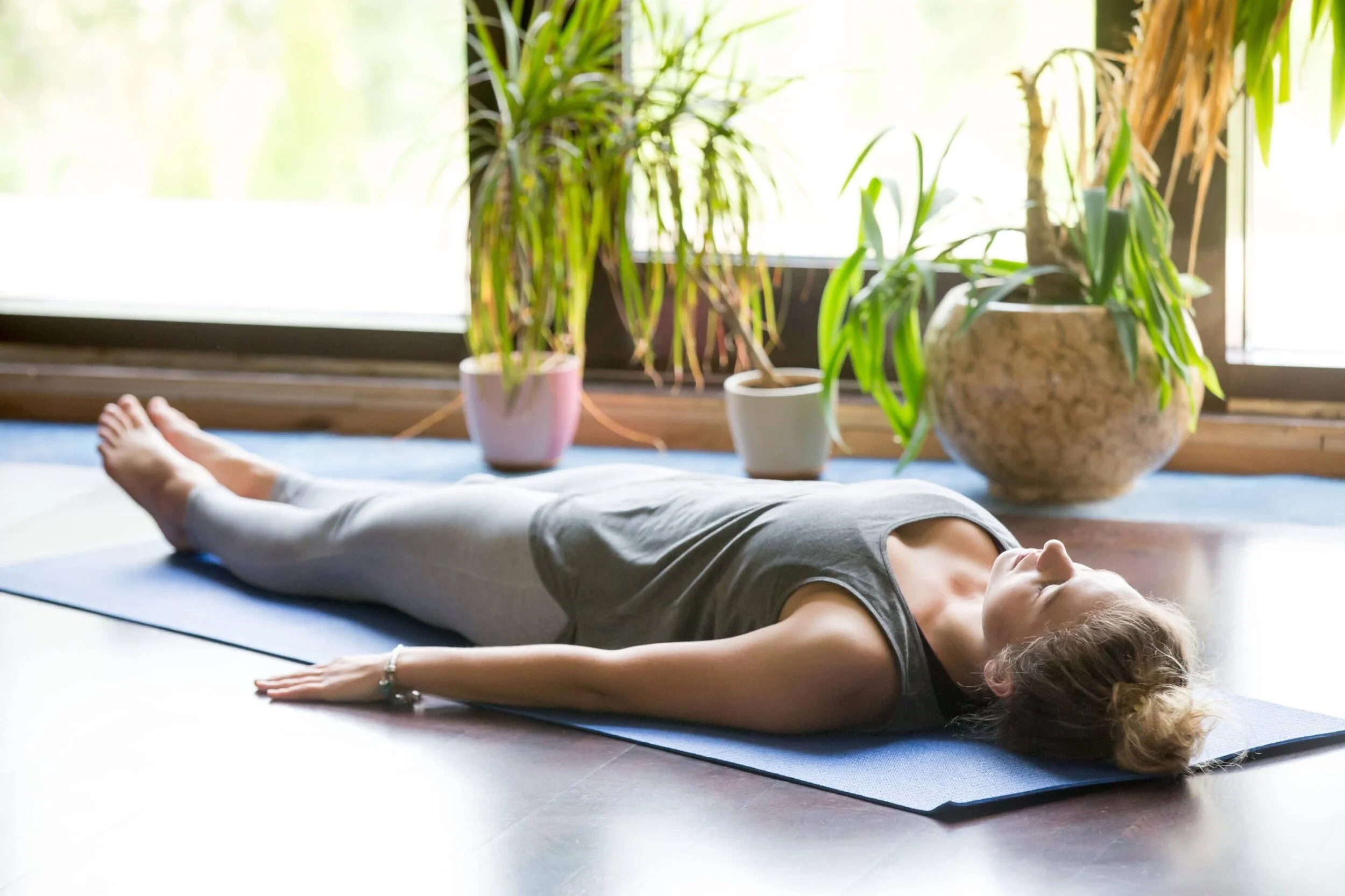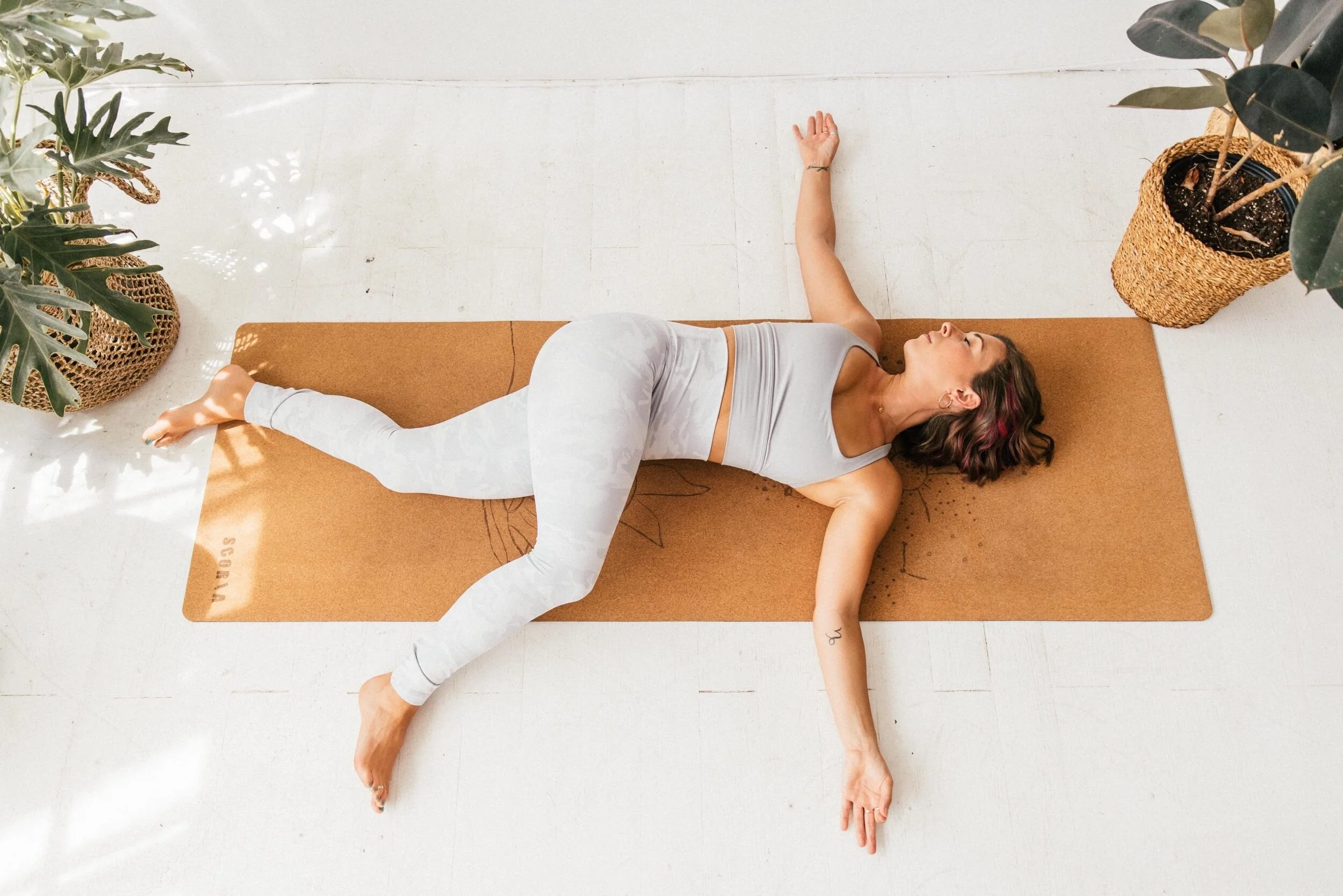Yoga and Chronic Pain: How Mindful yoga and breath practices can help
Around lunchtime yesterday I started to feel a headache coming on. I knew it was going to be one of the intense ones I dread because my head was starting to pound over my right eye. I quickly took some ibuprofen and drank a big glass of water (headaches are sometimes caused by dehydration). Neither helped much. Time for more strategies!
Headaches have been a constant part of might life for as long as I can remember. Ibuprofen and acetaminophen are my best friends, and I don’t know what I’d do without my migraine prescription medication (the “big guns” as I call it).
It’s a rare day that I don’t have a headache. Most days I feel really fortunate because they’re mild and merely just annoying. Then there’s the other end of the spectrum where I can’t even get comfortable lying down in bed.
Fortunately, I’ve learned some mindful strategies for helping to manage the pain. One thing mindfulness teaches is that it’s often our thoughts about our pain that causes the pain to feel more intense. For example, the more sorry for myself that I feel and the more angry and frustrated I get, the more tense my body becomes and the more my head hurts. When we relax our bodies and stop fighting it, the pain is much more manageable.
A slow mindful yoga practice always helps me handle pain. It often includes some of my favourite “go-to” poses: child’s pose, knees to chest, easy laying twist, reclined pigeon, and corpse pose (savasana).
I love to use eye pillows, cushions and blankets to help make the poses more restorative. Savasana, the final resting pose after most practices, is the perfect place to try this simple breath-based meditation for pain.
Breath-Based Mindful Meditation for Pain
Find a comfortable position lying on the floor, the couch, or your bed. If you have them, you can also place a pillow or cushion under your knees and under your head for more support. Cover yourself with a blanket if you’re cold. Eye pillows (heated, cool or neutral) are also really nice to use in this position.
Close your eyes and begin to notice your breath going in and out through your nose. Notice the sensations of the breath. Become aware of the rise and fall of your belly as you breathe in and out. Don’t try to regulate the breath in any way, just let your body breathe naturally.
When you’re ready, bring your awareness to your feet. Notice any sensations in your feet (i.e., tingling, temperature warm or cold?, pain, or perhaps nothing at all). If you notice any sensations, just observe with a curious attention, don’t try to change or alter the sensation in any way. Over time what you’ll notice with sensations is that they ebb and flow, they never stay exactly the same for very long.
Continue to do a body scan up through your legs to your abdomen, upper body and eventually to your head. If you notice any particularly intense or uncomfortable sensations as you move up through your body, stop and rest your attention there for a few breaths. Breathe into the sensations and observe. Be curious and don’t try to change the sensation, just notice. Once again, notice how the sensations change over time. If a particular area of the body is tense, see if you can breathe into that part and release some of the tension.
Once you’re finished with the body scan, rest in overall awareness of your entire body for a few breaths. See if you can notice any changes in how your body feels.
Stay in this position for as long as you can. When you’re ready, slowly open your eyes and start moving your body again before you get up and carry on with your day.
——
When I do this breath practice and notice the sensations in my body, particularly during a severe headache, I become more aware of the rest of my body is feeling in relation to my head. Quite often I notice tension in my shoulders and neck and do some additional releasing stretches for those areas, which often help to reduce the pain.
I invite you to try this breath practice next time and become curious about pain and discomfort. The more you do it, the more you’ll notice. Notice the role your thoughts play in your pain.
Become curious about the mind/body connection.
I’d love to hear from you, so if you have any comments about this article or any other blog post, please send me an email at sharon@sharonashtonmindfulyoga.com. And please share with anyone you think may be interested.
If you’re interested in more mindfulness resources and mindful yoga practices, please come join our private FB community – The Journey Within Mindful Yoga and Life Change community here:
To download your FREE Build your Resilience Toolkit please click here:



